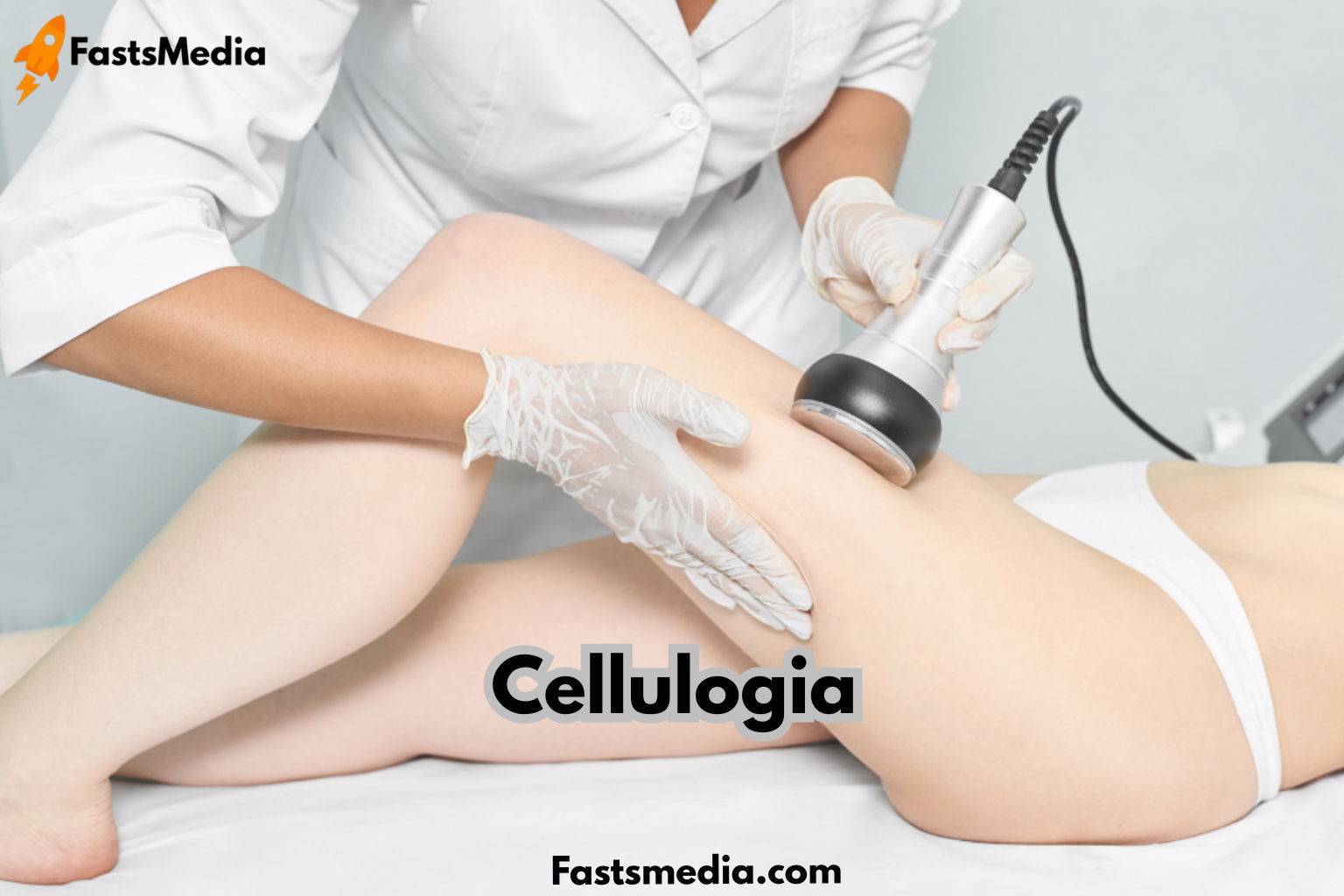Introduction
In the world of skincare and aesthetics, few topics spark as much curiosity as cellulite—and that’s where the term Cellulogia enters the conversation. Marketed as a modern, holistic approach to reducing cellulite and improving skin firmness, Cellulogia has become a buzzword in wellness and beauty circles.
While the name sounds scientific, Cellulogia is not an official medical discipline; rather, it represents a blend of techniques and products aimed at addressing the appearance of cellulite through massage, technology, and skin health optimization. Its growing popularity lies in its promise of being non-invasive, natural, and results-oriented—qualities many people now look for in aesthetic care.
What Is Cellulogia?
The term Cellulogia combines the root “cellulo-” (relating to skin cells or cellulite) and the suffix “-logia,” which implies “study” or “science.” In practice, Cellulogia refers to a set of treatments or wellness routines designed to target cellulite—the dimpled skin texture most common on thighs, hips, and abdomen.
Unlike invasive cosmetic procedures such as liposuction or surgical lifts, Cellulogia typically relies on mechanical stimulation, massage techniques, and topical formulas to stimulate circulation and improve skin elasticity.
Many beauty clinics, spas, and wellness centers use the term to describe a holistic skin-tightening system, often combining:
- Manual or suction-assisted massage (endermologie-like techniques)
- Radiofrequency or infrared heat treatments
- Natural creams and serums containing caffeine, retinol, or botanical extracts
- Diet and lifestyle recommendations to support circulation and collagen production
The key idea behind Cellulogia is that by stimulating the skin and underlying tissues, one can temporarily smooth the skin’s surface and enhance its tone.
The Science of Cellulite and Why Cellulogia Exists
Before understanding how Cellulogia works, it’s essential to know what cellulite actually is. Contrary to popular belief, cellulite isn’t a sign of being overweight—it’s a structural skin condition.
Cellulite forms when fat cells push up against the skin, while connective tissue bands (fibrous septae) pull the skin downward. This creates the uneven, bumpy texture commonly described as “orange peel” or “cottage cheese” skin.
Cellulogia treatments aim to address the underlying factors that contribute to cellulite:
- Poor circulation and lymphatic drainage
- Fluid retention and inflammation
- Weak connective tissue and low collagen levels
- Hormonal fluctuations
By improving blood flow, oxygen supply, and skin elasticity, Cellulogia treatments seek to minimize dimpling and create a more even appearance.
How Cellulogia Works: Key Techniques and Technologies
Mechanical Massage and Suction Therapy
A central aspect of Cellulogia is mechanical stimulation, often performed with specialized rollers or suction devices that knead the skin. This technique helps stimulate lymphatic drainage, reduce swelling, and increase microcirculation. The result is a smoother skin texture over time.
Topical Creams and Active Ingredients
Cellulogia products often include caffeine, retinol, green tea extract, or centella asiatica—ingredients that promote circulation and strengthen the skin’s structure. These compounds can temporarily tighten the skin and reduce water retention.
Heat and Radiofrequency Treatments
Some variations of Cellulogia incorporate radiofrequency (RF) or infrared therapy to heat deeper layers of the skin. This process stimulates collagen remodeling and helps break down small fat deposits.
Holistic Approach and Lifestyle Support
Because cellulite has multiple causes, Cellulogia also emphasizes nutrition, hydration, and exercise. A balanced diet, adequate water intake, and regular physical activity are considered key components of a successful treatment plan.
Step-by-Step Guide: A Typical Cellulogia Session
If you’re considering a Cellulogia treatment, here’s what a typical session may look like:
Step 1: Consultation and Assessment
A professional evaluates your skin type, cellulite grade, and goals. They may photograph the affected areas to track progress.
Step 2: Skin Preparation
The skin is cleansed, and a specialized gel or lotion is applied to help devices glide smoothly during the procedure.
Step 3: Mechanical or Vacuum Massage
The practitioner uses a Cellulogia device or manual technique to knead and suction the skin in rhythmic motions. This improves circulation and lymphatic drainage.
Step 4: Application of Active Serums
A serum containing caffeine, retinol, or herbal extracts is massaged into the treated area to enhance results.
Step 5: Optional Add-On Technologies
Some centers add radiofrequency, LED, or infrared light therapy to further boost collagen production.
Step 6: Post-Treatment Care
You’re advised to drink plenty of water, avoid heavy meals, and engage in light activity to help flush out toxins.
Helpful Tips:
- For best results, schedule 8–12 sessions over several weeks.
- Maintain results with proper hydration, diet, and regular movement.
- Avoid harsh sun exposure immediately after treatment.
Benefits and Realistic Expectations
Benefits
- Non-invasive and safe – no surgery, anesthesia, or downtime.
- Improved blood flow and skin firmness through consistent use.
- Visible reduction in cellulite appearance with continued sessions.
- Enhanced confidence due to smoother, healthier-looking skin.
Limitations
- Results are temporary unless maintenance sessions and lifestyle changes continue.
- Scientific evidence supporting dramatic long-term results is limited.
- Effectiveness varies depending on skin type, age, and severity of cellulite.
In short, Cellulogia can improve skin tone and texture, but it’s not a “miracle cure.” Sustainable results come from combining treatments with healthy habits.
Choosing a Reliable Cellulogia Provider
When considering a treatment, choose a certified aesthetic or wellness professional who:
- Uses FDA- or CE-approved equipment
- Clearly explains the procedure, risks, and realistic results
- Provides before-and-after examples from actual clients
- Recommends a personalized plan rather than a one-size-fits-all package
Always avoid clinics making exaggerated promises like “permanent cellulite removal.” Professionalism and transparency are the best indicators of quality care.
Conclusion
Cellulogia represents the modern evolution of anti-cellulite therapy—a blend of science, technology, and holistic wellness. While it doesn’t eliminate cellulite permanently, it offers an effective, gentle way to improve skin appearance, boost circulation, and enhance confidence without invasive procedures.
For best outcomes, combine Cellulogia sessions with a balanced lifestyle—nutritious meals, hydration, regular exercise, and stress management. Remember, radiant skin begins not only at the surface but from within.
FAQs
1. What is Cellulogia used for?
Cellulogia is a non-invasive treatment designed to reduce the appearance of cellulite, improve skin firmness, and promote better circulation.
2. Is Cellulogia scientifically proven?
While some individual techniques used in Cellulogia (like massage or radiofrequency) have scientific backing, the overall concept of “Cellulogia” is not officially recognized in medical literature.
3. How many sessions are needed to see results?
Most people notice visible improvements after 4–6 sessions, with optimal results achieved after 8–12 sessions combined with healthy habits.
4. Are there side effects?
Mild redness, tenderness, or warmth may occur temporarily. Always ensure your practitioner uses safe, sanitized equipment and approved methods.
5. Can Cellulogia completely remove cellulite?
No treatment can permanently remove cellulite. Cellulogia helps reduce its visibility and improve skin tone, but maintaining results requires ongoing care and lifestyle balance.

